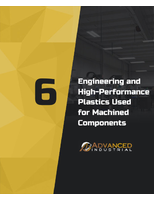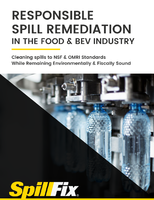Robotic Pressure-Blast System features 7-axis rotary design.
Press Release Summary:

Robotic pressure-blast machine system prepares inside and outside diameter surfaces of hollow shaft components with multiple-mode concept. Cabinet features 12 ft. track extensions with powered transfer cart and 1,000 kg mounted servomotor-driven turntable. The 84 in. diameter table, T-slots, and quick-change fixture enable processing of variety of parts. Two blast pots feed two pressure-blast nozzles for separate surface preparation.
Original Press Release:
Multi-Mode Robotic Blast System
January 19, 2012, Saratoga Springs, NY
Guyson Corporation has designed and built a robotic pressure-blast machine that operates either as a seven-axis rotary table surface preparation system or as a horizontal roller blasting system for preparing inside and outside diameter surfaces of hollow shaft components.
The multiple-mode concept makes a separate roller blast machine unnecessary. The multi-tasking robotic blast cabinet features a 12 ft. long track extension with a powered transfer cart on which a servomotor-driven turntable of 1,000-kilogram weight capacity is mounted.
The table is 84 inches in diameter and provided with T-slots and quick-change fixture locating hardware to enable processing of a wide variety of parts of different shapes and sizes. When the roller drive unit is needed for grit-blasting long cylindrical parts, it can be lowered into position by overhead crane and bolted to the table in less than thirty minutes.
For ID surface preparation in the roller-blasting mode of operation, the component is rotated at controlled and adjustable speed, while a lance with an angled pressure-blast nozzle enters the bore of the part, advanced in programmed increments by a linear ball screw/ball nut actuator. The OD of the component can be simultaneously grit-blasted by the robotically manipulated blast nozzle.
Two blast pots, each feeding two pressure-blast nozzles, allow the operator to choose between two different blast media specified for separate surface preparation processes. The media reclamation system separates the recirculating grit by means of two vibratory screen classifiers that deliver only media of the specified size to each pressure pot. Dual media capability further extends the versatility of the multi-mode robotic blast system.
In the rotary table mode of operation, with the rollers removed and one of the interchangeable part-holding fixtures locked in place to positively locate and orient the component, the turntable is controlled as a seventh axis of coordinated robotic motion as the six-axis articulated robot arm executes the nozzle motion program. The correct blasting angle, nozzle stand-off distance and surface speed are precisely and constantly maintained throughout the surface preparation process, even as the robotic nozzle manipulator traces the contours of complex-shaped components.
If desired, control of other blasting process parameters, such as blast pressure or grit flow rate, can be included in the recipe for each component and automatically recalled whenever that part program is selected. The blast machine manufacturer claims that the power and the tremendous flexibility of the robotic blasting system is demonstrated by its ability to store hundreds of pre-programmed blasting process recipes for different families of dissimilar components and consistently duplicate the surface finishing results any time each of those parts is blasted.
Prospective users of automated or robotic blasting equipment are invited to submit sample components for free laboratory testing and application engineering evaluation at the blast machine builder's factory in northeastern New York State.
Guyson has designed and built a multi-tasking robotic blast system that operates as a versatile 7-axis rotary table machine or a roller-blast machine for grit-blast surface preparation of ID and OD of hollow-shafted components, making separate dedicated-function equipment unnecessary.




